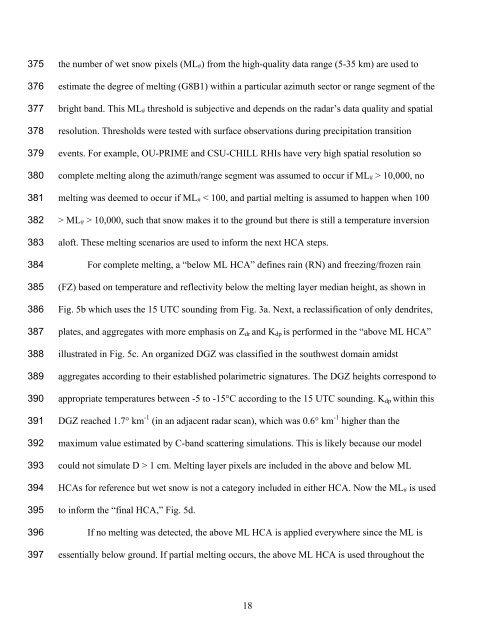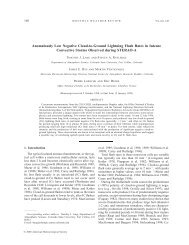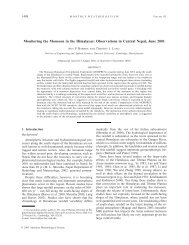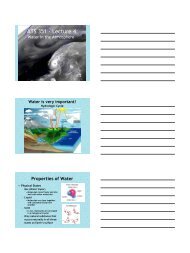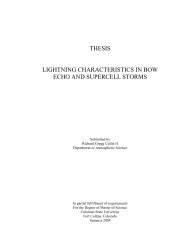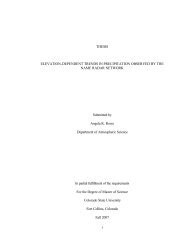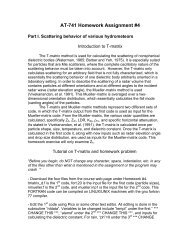1 A dual-polarization radar hydrometeor classification algorithm for ...
1 A dual-polarization radar hydrometeor classification algorithm for ...
1 A dual-polarization radar hydrometeor classification algorithm for ...
Create successful ePaper yourself
Turn your PDF publications into a flip-book with our unique Google optimized e-Paper software.
375376377378379380381382383384385386387388389390391392393394395396397the number of wet snow pixels (ML # ) from the high-quality data range (5-35 km) are used toestimate the degree of melting (G8B1) within a particular azimuth sector or range segment of thebright band. This ML # threshold is subjective and depends on the <strong>radar</strong>’s data quality and spatialresolution. Thresholds were tested with surface observations during precipitation transitionevents. For example, OU-PRIME and CSU-CHILL RHIs have very high spatial resolution socomplete melting along the azimuth/range segment was assumed to occur if ML # > 10,000, nomelting was deemed to occur if ML # < 100, and partial melting is assumed to happen when 100> ML # > 10,000, such that snow makes it to the ground but there is still a temperature inversionaloft. These melting scenarios are used to in<strong>for</strong>m the next HCA steps.For complete melting, a “below ML HCA” defines rain (RN) and freezing/frozen rain(FZ) based on temperature and reflectivity below the melting layer median height, as shown inFig. 5b which uses the 15 UTC sounding from Fig. 3a. Next, a re<strong>classification</strong> of only dendrites,plates, and aggregates with more emphasis on Z dr and K dp is per<strong>for</strong>med in the “above ML HCA”illustrated in Fig. 5c. An organized DGZ was classified in the southwest domain amidstaggregates according to their established polarimetric signatures. The DGZ heights correspond toappropriate temperatures between -5 to -15°C according to the 15 UTC sounding. K dp within thisDGZ reached 1.7° km -1 (in an adjacent <strong>radar</strong> scan), which was 0.6° km -1 higher than themaximum value estimated by C-band scattering simulations. This is likely because our modelcould not simulate D > 1 cm. Melting layer pixels are included in the above and below MLHCAs <strong>for</strong> reference but wet snow is not a category included in either HCA. Now the ML # is usedto in<strong>for</strong>m the “final HCA,” Fig. 5d.If no melting was detected, the above ML HCA is applied everywhere since the ML isessentially below ground. If partial melting occurs, the above ML HCA is used throughout the18


